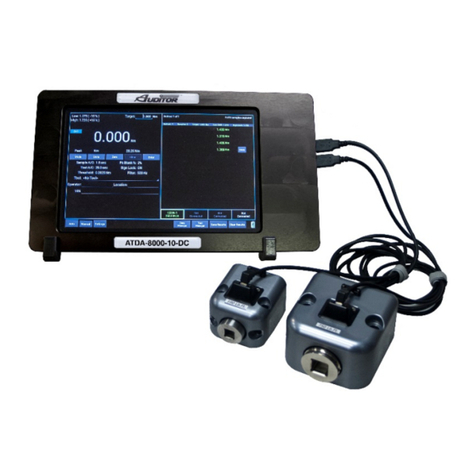
CONTENTS
Safety Requirements...................................................................................................................................................3
Descriptions and Specifications
Screen and button Diagram.............................................................................................................................................. 4
Back Panel Diagram ........................................................................................................................................................ 5
Unit Specifications………………………………. .......................................................................................................... 5
Operating Instructions
Charging the ATDA......................................................................................................................................................... 6
Basic Navigation.............................................................................................................................................................. 6
Turning On / Off .............................................................................................................................................................. 6
Transducers
Connecting Transducers (TXDR) .................................................................................................................................... 7
Confirming TXDR Connection..................................................................................................................................... 7-8
Basic Functions
Operating Mode ............................................................................................................................................................... 8
Selecting Operating Mode ............................................................................................................................................... 8
Setting Engineering Units ................................................................................................................................................ 8
Run Mode
Using the ATDA in Run Mode ........................................................................................................................................ 9
Accessing Run Mode ....................................................................................................................................................... 9
Measure Mode
Using the ATDA in Measure Mode ................................................................................................................................. 9
Accessing Memory Mode................................................................................................................................................ 9
Storing Rundown Torque Values..................................................................................................................................... 9
Reviewing Rundown Torque Values ............................................................................................................................... 9
Reviewing Statistical Information.................................................................................................................................. 10
ATDA Menu Functions
Accessing Menu Functions ............................................................................................................................................ 11
Peak Options Menu
Accessing the Peak Options Menu................................................................................................................................. 12
Auto Clear...................................................................................................................................................................... 12
Setting Auto Clear.......................................................................................................................................................... 13
Clearing a Torque Value / Run Mode ............................................................................................................................ 13
Clear / Enter Torque Value / Measure Mode ................................................................................................................. 13
Clearing Previous Torque Values .................................................................................................................................. 13
Filter............................................................................................................................................................................... 13
Setting the Filter Value .................................................................................................................................................. 14
Peak Blanking................................................................................................................................................................ 14
Setting the Peak Blanking Value.................................................................................................................................... 14
Sign Lock....................................................................................................................................................................... 14
Turning Sign Lock On/Off............................................................................................................................................. 14
Resetting Sign Lock....................................................................................................................................................... 14
Edit Limits ..................................................................................................................................................................... 15
Setting High and Low limits .......................................................................................................................................... 15
System Menu
Accessing the System Menu .......................................................................................................................................... 16
Sleep .............................................................................................................................................................................. 16
Setting the Sleep Timer.................................................................................................................................................. 16
Lockout Menu................................................................................................................................................................ 16
Setting the Lockout Modes ............................................................................................................................................ 16
Contrast.......................................................................................................................................................................... 17
Information / Accessing the Information System........................................................................................................... 17
Data Menu
Accessing the Data Menu .............................................................................................................................................. 17
Print Data Requirements ................................................................................................................................................ 17
RS232 Transfer Protocol................................................................................................................................................ 17
Data Stream Format ....................................................................................................................................................... 18
Pinout Diagram .............................................................................................................................................................. 18
Print Memory / Print Memory w/SPC / Clear Memory / Reset All................................................................................ 18




























